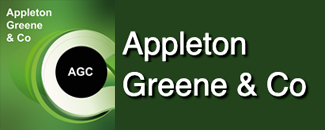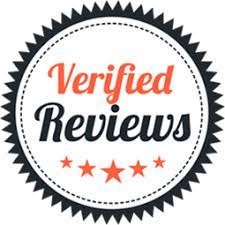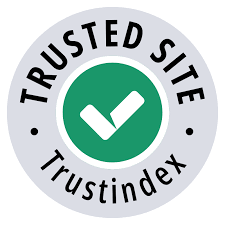Engineering Excellence

The Appleton Greene Corporate Training Program (CTP) for Engineering Excellence is provided by Mr. Feldhake Certified Learning Provider (CLP). Program Specifications: Monthly cost USD$2,500.00; Monthly Workshops 6 hours; Monthly Support 4 hours; Program Duration 12 months; Program orders subject to ongoing availability.

Personal Profile
Mr. Feldhake is a consulting engineer with more than 30 years of experience combining a strong understanding of new and emerging technologies such as AI/ML and advanced energy systems with product innovation, electrical and industrial engineering, and cross-functional leadership acumen to advance cutting-edge solutions in large-scale efforts for Fortune 500 companies such as MillerCoors, Anheuser Busch, Peabody, Owens Corning, Chrysler, and Boeing.
Dynamic changemaker with a proven record of influencing stakeholders at all levels, communicating between various internal and external parties to bolster synergies on new product development and commercialization. Effective strategist able to connect R&D objectives
with long-term business plans while consistently identifying avenues for additional revenue, cost savings, and process improvement. Executive leader establishing teams and cultures delivering top quality projects spanning all aspects from strategic planning to execution within budget and time constraints.
Mr. Feldhake’s personal achievements include; Novel patented neural network technology that learns in real time, several critical process improvement projects, SME support for the DOE Voucher program, and years of field commissioning. Mr. Feldhake continues to develop novel concepts for increased energy efficiency and performance.
To request further information about Mr. Feldhake through Appleton Greene, please Click Here.
(CLP) Programs
Appleton Greene corporate training programs are all process-driven. They are used as vehicles to implement tangible business processes within clients’ organizations, together with training, support and facilitation during the use of these processes. Corporate training programs are therefore implemented over a sustainable period of time, that is to say, between 1 year (incorporating 12 monthly workshops), and 4 years (incorporating 48 monthly workshops). Your program information guide will specify how long each program takes to complete. Each monthly workshop takes 6 hours to implement and can be undertaken either on the client’s premises, an Appleton Greene serviced office, or online via the internet. This enables clients to implement each part of their business process, before moving onto the next stage of the program and enables employees to plan their study time around their current work commitments. The result is far greater program benefit, over a more sustainable period of time and a significantly improved return on investment.
Appleton Greene uses standard and bespoke corporate training programs as vessels to transfer business process improvement knowledge into the heart of our clients’ organizations. Each individual program focuses upon the implementation of a specific business process, which enables clients to easily quantify their return on investment. There are hundreds of established Appleton Greene corporate training products now available to clients within customer services, e-business, finance, globalization, human resources, information technology, legal, management, marketing and production. It does not matter whether a client’s employees are located within one office, or an unlimited number of international offices, we can still bring them together to learn and implement specific business processes collectively. Our approach to global localization enables us to provide clients with a truly international service with that all important personal touch. Appleton Greene corporate training programs can be provided virtually or locally and they are all unique in that they individually focus upon a specific business function. All (CLP) programs are implemented over a sustainable period of time, usually between 1-4 years, incorporating 12-48 monthly workshops and professional support is consistently provided during this time by qualified learning providers and where appropriate, by Accredited Consultants.
Executive summary
Engineering Excellence
Engineering comes in many different forms and serves almost every market segment globally. As the world developed, it served commodities, transportation, war-fighting, communications, and the building market, along with many more. In fact, as scientists and engineers create each new technical marvel, a new set of engineers and tools is created. From static and dynamic load, thermodynamics, electrical power, and hydraulic calculations to CAD and PCB circuit design and simulation tools, engineers’ mechanisms and methods are far-reaching and ever-developing.
For a company involved with any aspect of new product or solution development, engineers are involved either directly or indirectly via subcontractors. Even if your company is involved with food delivery or a new lotion, developing that service or product takes some design. Is your company experiencing scope creep, where costs and schedules are being impacted? Is your product hard to scale up to meet demands, or are you constantly running into headwinds you did not expect? These are just some of the problems when developing new products and services.

Today, engineering is driven through several levers like competition, quality, liability, and profitability. These levers drive the goals of efforts to improve or create new products that offer improved quality of life, enjoyment, and profits. However, every new project comes with a set of new problems. What may seem simple in terms of ‘We have done this before’ can include surprise items like new chemistry or manufacturing processes that are different to your team in many ways. This is what drives enthusiastic engineers and project managers.
Even an experienced company like TSMC can encounter new ground when relocating facilities from one area of the globe to another. However, their engineering acumen and processes allow them to endure smoothly and accomplish the project goals seemingly without pause. How are these engineering standards and processes built? How do we decide which way to go when options seem endless? How do we know we are on the correct path to success?
Engineering problem-solving is a process, unlike open-ended research that large pharmaceuticals or government labs perform. Engineers rely on the basic science that was laid in front of them by scientists and engineers who have worked on similar efforts throughout history. There are tons of old and new materials on solutions, mathematics, products, and methods to solve most of today’s problems. Large companies succeed by creating processes that keep them on the path to success.
A great example of this is embedded into the story about the Millennium Bridge project in London. Shortly after this innovative and futuristic bridge opened with great fanfare, the bridge started showing signs of swaying with heavy foot traffic. Designed as a walking bridge for pedestrians to cross the River Thames in London, it soon earned the nickname the “Wobbly Bridge.” The engineering firm, not undaunted, jumped into action and conducted studies that found that the bridge was experiencing a phenomenon not extensively researched at the time. The closely matched walking patterns of the heavy foot traffic forced the bridge to sway. After some creative problem-solving and curative construction, the issue was resolved.
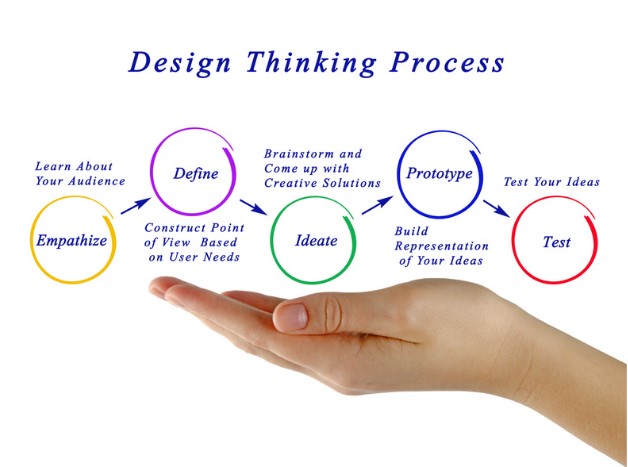
Every day, technology has something new to offer. From new software and automation to new substrate materials for silicon wafer production, new technology offers solutions to current problems. However, it always includes new concepts that may present new problems but do impact current methods and traditional thinking. These impacts create opportunities to discuss, review, and make decisions about moving forward. Thus, maintaining a robust, flexible, and adaptive engineering process in-house is vital to the team’s success.
Improving engineering processes has drastic impacts on company finances. Reduced risks, fewer delays, increased work efficiencies, lower surprise factors, higher worker satisfaction, and all around improved cost controls all play large on the financials of companies engaged in engineering exercises. Having a tool chest armed for engaging in these activities will make your company stronger, adept in handling complex situations, while relieving stakeholders to the day-to-day activities and putting out fires, freeing them to manage the overall goals of the company.
Curriculum
Engineering Excellence – Part 1- Year 1
- Part 1 Month 1 Stage Gates
- Part 1 Month 2 Project Costing
- Part 1 Month 3 Project Accounting
- Part 1 Month 4 Project Scheduling
- Part 1 Month 5 Concept Stage
- Part 1 Month 6 Project Approvals
- Part 1 Month 7 Design Stages
- Part 1 Month 8 Project Purchasing
- Part 1 Month 9 Construction
- Part 1 Month 10 Commissioning
- Part 1 Month 11 Advanced Processes
- Part 1 Month 12 Techno-Economic Analysis (TEA)
Program Objectives
The following list represents the Key Program Objectives (KPO) for the Appleton Greene Engineering Excellence corporate training program.
Engineering Excellence – Part 1- Year 1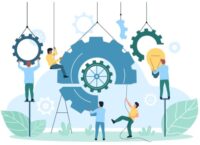
- Part 1 Month 1 Stage Gates – This session shall review the six stages of the Stage-Gate engineering process. The gates discussed are the Conceptual, Basic, and Detailed Design, Construction, Commissioning, and Acceptance stages. It will also discuss proper handoffs and the setting and alignment of goals for the project. Not every engineering project deserves a phased approach. Maybe the exercise is as simple as a troubleshooting effort to solve an immediate technical problem. However, even these should have some process embedded into the exercise. The fact is, by changing one parameter, there might be several others affected by the change. So, caution should also reign. For this exercise, we want to discuss each step along the path and discuss what kind of deliverables should be required. During this phase, each department should define requirements that would be rolled into the deliverables. We shall also discuss KPIs that will determine each gate’s success criteria, whether functional or financial. Finally, what integration is needed for these groups, and what is the sign-off to allow the step to the next gate?
- Part 1 Month 2 Project Costing – Determining the cost of projects should be more science then art, however, best practices in project costing come from years of practice. Just like a golfer who practices everyday, or an artist who polishes their shapes, costing is something that should be considered art. In fact, depending on the project, the cost method(s) may change, much like a golfer changes clubs in situations. This session discusses two main approaches for determining a cost for a project. Order-Of-Magnitude (OOM) vs. Means Costing is discussed at length so the client understands the inner working and benefits of each. CAPEX, OPEX, and TCO costs will also be addressed. We shall build these mechanisms for use and discuss how to leverage the tools. We shall also discuss risk management and adjudication or mitigation of risks in project budgets. We shall define the specific KPIs, such as margins and contingencies, that should be the target for each project and how the financial team should work with developed budgets.
- Part 1 Month 3 Project Accounting – Tracking project costs differs from tracking company costs. One method is designed to help manage the company and make sure it is run per the governing laws and regulations of the state. The other method, the one that manages project costs, provides valuable information for the project team that they are meeting the goals of the agreed-upon costs, risks, and profits. Without this important tracking method, companies would need to spend time building in necessary traceable data points within their accounting system to provide visibility to the project management team. The planning portion of this session will look to build the tracking methods and tools for the project management team. We shall discuss the collection methods, accuracy, and means by which PMs can track and report back to leadership the progress and financial position of their projects. We shall also discuss how the financial team should leverage these tools to update their books.
- Part 1 Month 4 Project Scheduling – Scheduling projects is a tedious but very necessary task to ensure project success. Again, there are different methods and degrees of development that are available to any company, but how much of a degree is needed, and how should the project management team track projects? Also, understanding the difference between scheduling and sequencing is important. One addresses the need to schedule project deliverables aligning to milestone dates, while the other addresses the interlocks between the parts of deliverables and construction. During the planning portion of this phase, we shall discuss the accuracy requirements and project types of the company and define what metrics are needed. We shall also discuss the available tools and methods and define which one(s) could be used. We shall also discuss project cash flow and how this ties into the financial team.
- Part 1 Month 5 Concept Stage – Once a business has indicated an interest in a new product or project, what defines a concept and how do we leverage the metrics and scheduling tools to support the development of an internal concept to reach approval? Some creativity is required here at this stage because each product or project may differ vastly. What works vs. does not work, and at what level of detail should be required? In an ideal world, once a project moves to the next stage, if the stage does not confirm the costs and schedule laid out at this stage, the project should return to this stage. For projects involving new science, this stage is spent in labs and can be years in the making. For most projects, customer feedback is critical to planning and success, so reviews are extremely valuable and serve to cement the plan. Planning for this stage will discuss the project types of the company and set a level of expectations. We shall discuss the minimum deliverable requirements for types of projects and acceptable KPIs. We shall also review some current projects and examine if they should be placed back into the concept stage. We shall also discuss the risk tolerance for these projects and define the acceptance criteria for approving the project to advance to the basic design stage.
- Part 1 Month 6 Project Approvals – Active projects, whatever stage they are in, need constant monitoring. What level of detailed monitoring is required, and how should this monitoring be conducted? How is project information disseminated throughout the company? Also, it is important for the leadership team to conduct project reviews so sufficient details on current progress and risks are understood. Most important is how are issues tracked and managed. These issues can stem from any department or team and can be technical, financial, safety, or other aspects. Tracking this information is critical to the success of the project. During the planning phases for this session, we will discuss minimum standards for reviews and the documentation plan for project reporting. We shall also discuss the conduct of the review sessions for the leadership and project management teams. One of the most critical discussions shall be the creation, documentation, and management of action items for projects. When and where are action items appropriate and how much oversight is required for success will be addressed.
- Part 1 Month 7 Design Stages – Once a project has reached a basic design stage, after all the concepts, budgets, and schedules have been approved and money allocated, what are the success steps that place a project on the success path? During this session, we will review the basic, detailed, and final design and construction phases in detail. Leveraging the metrics and tools established up to now, we shall discuss how each of these stages should be conducted and how approvals shall be reached to move a project through this series of steps. What checks and balances are there and what are appropriate actions when new data might indicate a project’s potential has changed? During this session, we will outline the stages and create approval requirements. This new business process will be detailed for the project types of the company and serve as the template for the departments. We shall also review current in-house projects to define where they are in this process and determine the next steps for each.
- Part 1 Month 8 Project Purchasing – Although not every project involves purchasing services, equipment, or materials, it is important these methods be developed to reduce risks and remove cost impacts for related projects. Purchasing can be a very technical and laborious process. Even during the early stages of a project, purchasing should align with the goals and costs of the project being developed. How should this be conducted, and what are the mechanisms that support successful projects? When is it appropriate to onboard services and vendors to support your project, and how do you drive costs and risks down? Contracts vs. Purchase Orders vs. Bulk Buying: when are these appropriate, and how do they differ? Also, what is the paperwork requirement and who should be involved are all questions a purchasing team should consider. During this planning session, we will discuss the types of purchasing the company is currently planning and start to build strategies and methods that would support the projects. We shall also develop the purchasing process along with the checks and balance requirements for each type of purchase. We shall also develop a set of expectations for purchasing equipment, which might include a subset of these phases but for the vendor to execute. Finally, we shall develop payment stages and methods within the new process.
- Part 1 Month 9 Construction – The construction phases of a project can bring new domains that in-house experts might not understand or support. These might include trade hiring and practices, shipments and staging of equipment, managing construction methods, quality checks, and safety concerns. It is important to understand the construction phases and how the company can conduct itself during these critical periods. Also, construction should be managed to support the project management team’s sequencing and schedule. The wrong sequence can harm project schedules and budgets, and sub-contractors need to align with the sequence. Construction quality matters during and after the work, so having a set of standards is extremely valuable. Does the company risk managing construction themselves or outsource this effort? How does purchasing tie into this process, and how are approvals sought and tracked? During the planning for this session, we will build a construction management narrative on how the company will manage projects. We shall also define how the departments or teams will work by assigning roles and responsibilities to each. We also discuss a plan for standards and the management of construction quality. Finally, we shall determine what reviews and methods are needed by the leadership team for oversight of construction projects.
- Part 1 Month 10 Commissioning – There are several steps within the commissioning phase; Basic Point-to-Point checks, Commissioning, and Validation. We discuss all three during this session and set a level of expectations. Materials for the production testing and ramp-up will also need to be planned, which can produce waste and costs. If everything works well throughout the project, this phase can be short and effective, putting into action the final product conceived earlier. No new documents should be created during this phase as all the tracking and reporting, like commissioning and validation plans, are already established, populated, and ready for completion during these steps. We shall discuss how the team should approach each step and how departments should support the effort. Finally, we discuss how the project should evaluate the project end product and adapt to issues that might enhance the product, provide improved quality, lower cost of production, or improve safe operations. We also discuss how to close the project and provide a final report for the leadership team.
- Part 1 Month 11 Advanced Processes – During a company’s operations, some particular situations might call for unique actions to resolve specific needs. These actions might include Process Safety Analysis (PSA), Hazard and Operability studies (HAZOP), or Process Improvement Teams (PIT). Also, means-end analysis is a tool for extracting a decision in situations where the material may be highly technical, including large data sets, and opinions of multiple disciplines and specialties, where clear decisions could be highly contentious or impactful. The reasons for initiating these actions and their conduct and results shall be discussed at length. More discipline and adherence to the rules governing these actions are required and may be dependent on local or state codes. We shall discuss the company’s needs and determine where and when these actions may apply, then discuss and build a process for conducting them. What should the goals and results look like and how to provide a final product of results will also be discussed.
- Part 1 Month 12 Techno-Economic Analysis (TEA) – TEAs are highly dependent on the item being analyzed; however, the process steps are relatively easy to execute, which provides efficient and effective results. Basically, this is a Scrum method suited for electro-mechanical or software products and can be applied at any location along the engineering path. Well suited for problem-solving, leverage this tool when needing to overcome particular engineering, cost, or quality challenges. During this session, we shall discuss and build a TEA process for the company that can be used anytime. Dynamic, challenging, and pointed, this business process will be able to ramp up quickly and provide the leadership team with a final report of the analysis. We shall discuss the various specialties required for this task and how to staff the team. We shall also discuss the format and mechanism that should be leveraged during these exercises, like initiative identification, classification, and management. We discuss the ultimate goals for these events, allowing the team to move in a direction and understand when they are complete. Finally, we shall discuss where a TEA event should be conducted and add value to the company’s project profile.
Methodology
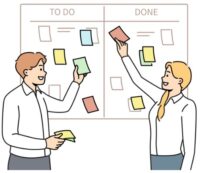
Engineering Excellence
The program is designed from a top-down approach, meaning that the earlier sessions start at the top (i.e. Costing and Scheduling) and create the tools and systems necessary for later sessions. Each session builds upon the other and in the end your left with a great set of tools and processes that will strengthen your company. During these sessions, there will be key cultural and mechanical developments, or changes, that will be required.
During the initial session, each department can outline its keys for a successful project. In fact, prior to this, an organizational plan with roles and responsibilities will need to be created to make clear what departments are responsible for. This could lead to severe conversations within the company that impact people, but this is a driver for change. Once this is understood, departments can start outlining their project goals and assign KPI that interest them.
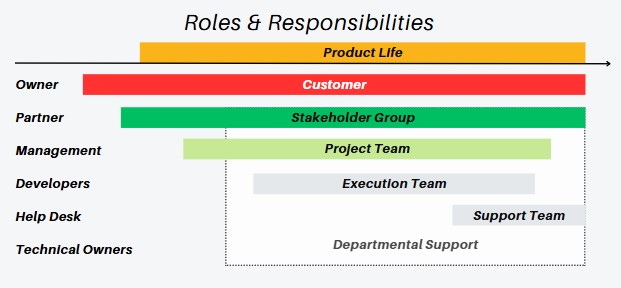
During sessions 2, 3, and 4, a clear break between conventional accounting and project management will be discussed. These two groups should work for mutual success so the discussions should focus on what each group needs while developing the tools for the project management team. To be clear, these exercises will not attempt to change the accounting practices of the company, only enhance them with a focus on project management. Particular focus will be on how the company will develop the costs for projects, building an excel or sheets style system. This system is open and transparent providing robust notations, controls and functionality to create a solid set of tools. After the development of these tools, and only after working with them successfully on some projects, can a SaaS style or application solution be sought out that can match the tool’s functionality.

Sessions 5, 6, and 7 delve deeper into engineering practices. The leadership, engineering, and project management teams will have conversations and indicate how success will be managed. Clear business processes shall be developed for the project types the company wishes to execute. The methods will be documented in a clear flow chart style, showing the flow and options available to the teams. Clearly stated approvals and KPIs will be highlighted for transparency.
Session 8 will focus on purchasing. Purchasing can be quite the experience, so focused discussions on the types of products, materials, and quality controls will be conducted. During this session, a scrum-type process will be undertaken to capture focus points and metrics from all the departments. The session will create a straightforward business process, again with approvals and KPIs highlighted, that shows how the company will purchase. The process will need to satisfy all the purchasing needs of the company, detailing specific sub-processes for each as required.
Session 9 will focus on the construction and conduct of the company during this important stage. The main objective of this session is the construction narrative. Unlike a flow chart-style business process, this narrative will seek to provide specifications on who, when, and how things will be accomplished to meet the goals of any project. Another important goal is the identification of required specifications to manage the quality of the construction. This important goal will not include the writing or development of the specifications; however, by highlighting the need, the project management, engineering, and purchasing departments can provide the details at a later time. A clear roles and responsibility matrix shall be developed showing how all the departments interact with this phase, so every department should be represented in the session.
Session 10 completes the main portion of the program by discussing the three remaining pieces of the project cycle: Commissioning, Validation, and Project Close-out. Each of these steps is highly critical and can have an extreme effect on the success of the project and company. Simply, how do you start production, creating something with a high degree of quality and ramp up production to meet sales. Is the project complete once production is met for a day or two, or what should be the role of the PM at this stage? A discussion to clearly state how the project management group should function at this stage will be conducted. We shall also cement how each department should support the production as the project closes and the new product reaches continuous production.
Session 11 and 12 deal with specific tools for various other tasks and functions a project or company may need to enact. The focus here is on identifying the processes and when, if needed, they should be enacted, along with how they would be conducted. New business processes shall be created for transparency with clear controls for the leadership team to manage their execution.
Finally, throughout the program, communication on what is coming and how new processes will be implemented will be essential. Communications should provide clear overviews and goals of the change, as well as how the change will impact the company, along with a timetable for implementation. A feedback method should be built into these new processes; some degree of markup and comment allows the company to acquire insights that might not have been thoroughly discussed and bring improvements. These communications can be discussed at the end of each session and signed off by the respective leader.
Industries
This service is primarily available to the following industry sectors:

Manufacturing
Manufacturing can take many forms, from electrical components for transmitting signals and power, leveraging hardened electronics, to plastic toys. The methods for engineering these products also can take many forms and require different processes, materials, science, and talent to achieve. Adding to the complexities of engineering your product are the additive issues caused by having multiple products in your offering.
The process of manufacturing products usually involves materials science, and the final products depend highly on material quality. Whether the material is a raw input to a final product or the product itself, sampling, measuring, and analyzing the materials must follow best practices. These quality systems are like a complete vertical market, having manual protocols, tools with local databases, and IT support for data extraction and reporting systems.
Product Manufacturing can involve many wet and dry processes and electromechanical systems like robotics to produce a final product. Immediately, the equipment types, functions, designs, and operations may consist of a broad spectrum of technologies. During manufacturing, the procedures may include manual operations involving staffing and ergonomics.
Creating the staff that will produce, assess, support, and package the products is just as crucial to the success of your company as the technical issues. Staffing levels that provide a good balance of productivity and support while keeping the equipment utilization or Overall Equipment Effectiveness (OEE) high are of utmost importance. OEE, a standard metric used to measure the productivity of production lines are critical KPI data points that can and should be monitored hourly, providing the teams and leadership with instant actionable intelligence to manage daily operations.
Documenting for consistency can be a very valuable asset for any company. Building the documentation for standard operating procedures (SOP) for work, however, can be tedious and expensive. These practices need to be embedded into the business processes and culture of the company to provide consistent products. These practices also create safer environments for your employees and can affect every department of the company, like QA/QC.
Finally, products or subassemblies can be outsourced by leveraging third-party contractors. These critical suppliers should fit into the manufacturing process as rigidly as other internal parts. Best practices for the quality of these third-party products will be driven at the contractors’ assembly facility. Managing these quality points will be critical for the success of the product and company.
Food & Beverage
The food and beverage (F&B) market comprises hundreds of thousands of ingredient suppliers, equipment vendors, producers, warehousing, and delivery services. At over $7.2 Billion globally, this market is in constant flux as tastes, governance, and migration provide constant pressure points for businesses. Developing a solid operational and leadership team with a dynamic culture is only one of many essential keys to success.
As with manufacturing anything else, producing a food or beverage can have many different processes, from quality water, cleaning, and wastewater systems to batching and mixing systems and robotic packaging. These systems have various equipment and subsystems and should be organized to provide robust productivity while maintaining quality and reducing spoilage. These types of systems also provide for by-products and various other chemical and material support requirements.
Other aspects of the F&B industry include batches that provide quality and the leadership team a means to manage the output product based on time-based produced. Most foods and beverages are not created in continuous processes and have to be batched. Some sets of ingredients always need to be combined at proper times and quantities, then mixed, maybe heated, before going to the next stage of the process. These ‘batches’ require good monitoring and quality checks along the way to provide traceability for troubleshooting and process analysis.
Maintaining good batch records is a must for F&B companies. In fact, depending on the type of product, it may be governed by the state. Best practices here can be critical to the success of the company, so the business procedures and processes should be clearly stated.
If more was needed, having to produce products while keeping up with the industry creates the need to stay agile and flexible while maintaining quality. As tastes and preferences for types of ingredients affect the market, companies must be able to adapt by offering new products, brands, and packaging options to the customer. These requirements drive flexibility options into the supplier’s equipment, making it easier, but they are also trying to keep up with the industry, which can take time.
Finally, economic constraints and environmental concerns can create pressure points that must be managed and handled. From new requirements on plastics to changes in what is considered gray water, these concerns drive innovation, technology, and operational changes. Thus, strong business practices are paramount for the success of these F&B companies.

Software
The software market deserves a particular category and differs from other manufacturing facilities in many ways. The software product, by nature, is unseen but provides users with results and an experience. Because it is unseen, the perception of the quality of the product provides this need for a particular category. And although the customer experience can provide a great measure of quality, this measure is superficial only. The leadership of the company must understand this aspect and create great business processes and culture to ensure the product’s investment does not hit a dead end.
Even if the company’s product is only a portion of a final product, the product is made up of code compiled by some compiler and connected to a user interface. This interface then has its own code-driven components. Even the operating system (OS) that a product is operating on has its internal code-driven components. This is why the market is such as it is. Everything from home-driven code and snippets, software development kits or SDKs, and third-party code from repositories like GitHub create unforgiving scenarios.
Furthermore, unlike the late 1990s and early 2000s, software has matured and propagated into many types of solutions. From standard desktop applications to software as a service (SaaS) on a cloud computer to device or edge computing and application programming interfaces or APIs, software takes many forms and deliverable types. These many forms and types create demand for even more sets of tools and software just for developing and managing the product’s quality and performance.
Then, there is this artificial intelligence (AI) paradigm made up of even more tools and software. In fact, these software products are even more camouflaged by the nature of their data sets. This is particularly of interest today with political calls for moral and ethical standards of training sets and outputs. Managing these details does not need to be marginalized due to the abstract data. Robust processes can be enacted to ensure high quality for these types of products.
Finally, after all that, we still have more technical challenges. Because of the nature of the industry, updates to operating systems, tools, and interfaces create a never-ending cycle of code-build-test-deliver. Keeping up with all the critical changes required to keep your product running for the client is almost a 24/7/365 operation. Just look at the CrowdSource and Delta airline saga from a few months ago. Due to a Microsoft (MS) update, a CrowdSource (CS) security patch was issued that took out every sever globally that was running the MS+CS configuration. However, a quick fix was provided, requiring updating on these servers, but for some reason, Delta’s servers were not updated for some time, which caused some severe downtime.
Hiring practices for software product companies is a constant ongoing process. From sending out very detailed requirements involving acronyms that even great programmers cannot recognize to finding and vetting prospective coders, this ongoing challenge is essential. Not only the technical requirements but the type or style is necessary. A database designer does less coding than a typical coder, and a data scientist produces data from other data and is involved with quality controls. Having a coder with specific knowledge of one platform or another may be a requirement a company cannot escape.
Documentation within a software company may be one of the company’s most essential quality control systems. It can take many forms, from simple code documentation and headers to technical resources and code repositories. Documentation can also be embedded into virtual environments and control robotic process automation (RPA) routines, help desk prompts, and data collection methods.
As this market continues to develop, the product will become increasingly abstract, hidden, and confusing. Companies must enact strong business procedures to keep pace and adapt to the market. Soft or virtual quality controls will be essential, not optional, so the leadership team can monitor, manage, and represent their product.
Energy
The energy generation, storage, and control markets are more dynamic today. Made up of smaller markets, these suppliers and vendors must create new solutions, adapt to changing political winds, and work together to form tighter integration for grid stability. They also serve a broad client base, including local and state government entities, as well as regional and local businesses, with grid and micro-grid solutions.
These solutions always involve lots of components and subassemblies. Designing, testing, and validating these components is expensive and can push project schedules into multi-year programs. Outsourcing here is crucial and can help the project immensely if adequately leveraged. Project management teams should rely heavily on their purchasing agreements and processes to ensure components meet the company’s needs.
Since these solutions can service many markets, they might fit well into several sales funnels. However, the needs of the clients within these specific funnels will be different. An example of this is Grid vs. Micro-Grid energy storage systems. On the one hand, the larger grid-level systems will be much larger and require integration with other systems and vendors to manage the units. The Micro-Grid system may only serve a local distributor who only wants to secure power for his local clients in cases of storms or other emergencies. Another factor here is that the mix of clients will affect the mix and balance of technologies; thus, your company may need to integrate well with similar systems like Solar and Wind solutions.
Due to the high level of variance in clients and integrated technologies, performance specifications might pose a challenge. What level of complexity do you offer to cover the various requests and options for your clients? This affects the firmware and the design of the hardware components that interface with these options. Staying flexible and adaptive, the solutions should be able to respond quickly to new and emerging technologies. Managing this while maintaining product quality will only work with solid business processes.
An example of these issues can be found in Amazon’s Solar project a few years back. After several fires in warehouses, Amazon had to shut down all the Roof-Top solar systems while they figured it out. After analysis, it was found that impedance mismatches between specific components caused the fire. The liabilities here cannot be understated; with the workers present below and the enormous value of products on the shelves, the damages could have devastated a supplier.
These solutions, stemming from this market, involve many different trades and specialties. R&D resources like PhDs and Scientists, Mechanical, Electrical, and Electronic Engineers, and Technicians who build and test the components and equipment. Business practices, processes, protocols, standards, and procedures matter at many levels. The leadership challenges here are considerable and require constant monitoring for your company’s success.

Consumer Goods
Within the consumer goods market is a subcategory called the beauty and personal care market, which generates about $650bn in revenue annually, growing by 3.11%. It consists of Cosmetics, Fragrances, Personal Care, and Skin Care products, which require vigilance in their development and production. These products also involve state food and drug agencies, like the FDA in the USA, which regulate and permit suppliers to produce them.
Besides the manufacturing lines required to produce these products, one of the higher costs for a supplier is the development and testing of these products. Even before the concept can be tested, labs must provide conclusive data that materials and blends provide some results while not harming clients or presenting a health hazard. Another aspect of these products is their effect on wastewater and our environment. While depleting natural resources, the wastewater can damage plant life and endanger wildlife.
Once a product blend has reached a trial level, companies must test it. Depending on the product’s originality or novelty, this can include new experimental and control group studies. These studies provide the testing necessary to convince state agencies to allow the product to enter the market. Consumer group studies at this point are also critical to verifying the market and the investments needed to go into the market. A solid scale-up plan is also essential to fill the supply chain while minimizing the risks.
Manufacturing these products involves concepts and processes very similar to those of the food and beverage industry; however, the mix of products, packaging, and promotions leads to smaller, focus-driven production lines. Material and component separation within the processes is also very important, thus, strong chemical analysis and modeling should be expected. Combe, a highly successful personal care products company in the US, excellently executes these issues and manages many popular brands like Just For Men, Vagisil, and Seabond. All these products involve very specialized mixes, packaging, and marketing, and there is very little cross between them.
Locations
This service is primarily available within the following locations:

Nashville, TN
Nashville, also referred to as Music City, is the county seat of Davidson County and the capital and largest city in the U.S. state of Tennessee. According to the 2022 U.S. census, it is home to approximately715,884 people and was situated in Middle Tennessee. Nashville is the fourth most populous city in the Southeast and the twenty-first most populous city overall. One of the fastest-growing cities in the country, it is situated on the Cumberland River and serves as the hub of the Nashville metropolitan area.
The city was established in 1779, when this area was still a part of North Carolina, and was named for Francis Nash, a general in the Continental Army during the American Revolutionary War. Nashville was officially founded in 1806. Because of its advantageous location as a port on the Cumberland River and as a railroad hub in the 19th century, the city expanded rapidly. During the American Civil War, Nashville, which was a part of Tennessee, seceded; in 1862, Union soldiers captured Nashville, the Confederacy’s first state capital. It was under occupation during the conflict. The city gradually regained its prominence after the war. It established a manufacturing basis and became a hub for trade.
Six smaller municipalities are part of Nashville’s two-tiered city-county government, which has existed since 1963. A 40-member metropolitan council, a mayor, and a vice-mayor oversee the city. Five members are elected at-large, while about 35 members are chosen from single-member districts. The Tennessee Supreme Court’s courthouse for Middle Tennessee, one of the state’s three divisions, is located in Nashville, reflecting the city’s standing in state government.
According to the GaWC, Nashville is a “Gamma” global city as of 2020. Gamma cities are world cities that connect smaller economic regions to the global economy. The city is a prominent hub for the country music business in particular. The Predators, and Titans are the major professional sports teams that call Nashville home. In addition, the city is a significant hub for the banking, publishing, technology, healthcare, and automotive sectors. AllianceBernstein, Asurion, Bridgestone Americas, Captain D’s, Concord, Gideons International, Hospital Corporation of America, LifeWay Christian Resources, and Ryman Hospitality Properties are among the organizations with headquarters located in the city. Numerous universities and colleges, such as Tennessee State University, Vanderbilt University, Belmont University, Fisk University, Trevecca Nazarene University, and Lipscomb University, are also located in the city.
People are moving to Nashville primarily due to its thriving music scene, affordable cost of living compared to other major cities, a strong job market across various industries, a vibrant cultural community, and a welcoming Southern hospitality, all while offering a pleasant climate with four distinct seasons.

Birmingham, AL
The American state of Alabama’s north central area is home to the metropolis of Birmingham. The most populated county in Alabama, Jefferson County, with its county seat in Birmingham. Birmingham was the second most populated city in Alabama behind Huntsville, with 196,910 residents as of the 2023 census estimates, a 2% decrease from the 2020 census. With a total population of of the metropolitan region of 1,115,289 in 2020, the Birmingham metropolitan area is the largest in Alabama and the 47th most populated in the United States. Birmingham is a significant regional center and is connected to the country’s Deep South, Piedmont, and Appalachian regions.
Three pre-existing agricultural towns, merged to form Birmingham in 1871, during the post-Civil War Reconstruction era. It expanded into an industrial and railroad transportation hub with an emphasis on mining, the iron and steel sector, and railroading, annexing numerous smaller neighbors. Birmingham was named after one of the largest industrial cities in the United Kingdom, Birmingham in Warwickshire, England. The majority of Birmingham’s first settlers had English ancestry. The city may have been designed to provide it a competitive edge over industrial cities in the Midwest and Northeast by providing inexpensive, non-unionized, and frequently African-American labor from rural Alabama for use in the city’s blast furnaces and steel mills.
Birmingham served as the South’s main industrial hub from its creation until the end of the 1960s. Birmingham gained the moniker “The Magic City” and “The Pittsburgh of the South” due to the rapid growth of the city between 1881 and 1920. Similar to Pittsburgh, Birmingham’s main businesses were the manufacture of iron and steel as well as a significant portion of the railroading sector, which included the manufacture of railroad cars and rails. Beginning in the 1860s and continuing to the present, the two main railroading centers in the Deep South were Atlanta and Birmingham. The latter half of the 20th century saw a diversification of the economy.
Birmingham still has a significant manufacturing sector, but other industries and enterprises have grown in importance, including banking, telecommunications, transportation, electrical power transmission, healthcare, higher education, and insurance. With the exception of coal mining, which is no longer a significant business in the Birmingham area. Birmingham is one of the biggest banking hubs in the US and one of the most significant business hubs in the Southeastern United States. Along with several other Fortune 1000 businesses, the Birmingham region is home to the headquarters of two Fortune 500 companies: Regions Financial and Vulcan Materials Company.
The University of Alabama at Birmingham School of Medicine (previously the Medical College of Alabama) and the University of Alabama at Birmingham School of Dentistry have been located in Birmingham since 1947. One of the three primary campuses of the University of Alabama System, the University of Alabama at Birmingham, was founded in 1969. Two private universities, Samford University and Miles College, are also located in Birmingham. Major medical, dental, optometry, pharmacy, law, engineering, and nursing institutions and universities can be found in the Birmingham area. Birmingham is also the headquarters of the Southeastern Conference (SEC), one of the premier U.S. collegiate sporting organizations.

Atlanta, GA
The capital and largest city in the U.S. state of Georgia is Atlanta. A part of the city stretches into nearby DeKalb County, and it serves as the seat of Fulton County. According to the 2020 U.S. census, Atlanta is the eighth most populated city in the Southeast and the 38th most populous city in the country, with 510,823 people living inside the city limits. It is the main city in the considerably larger Atlanta metropolitan area, which is made up of Fulton, DeKalb, Cobb, Clayton, and Gwinnett counties. Metro Atlanta is the sixth-largest metropolitan area in the United States, with an estimated population of over 6.3 million as of 2023. Located slightly over 1,000 feet (300 meters) above sea level in the foothills of the Appalachian Mountains, Atlanta boasts a distinctive geography that includes rolling hills, an abundance of greenery, and the highest density of urban trees of any major American city.
Initially established at the end of a significant state-sponsored railroad, Atlanta quickly rose to prominence as the meeting place of multiple railroads, which fueled its development. The largest was the Western and Atlantic Railroad, which is where the name “Atlanta” originates and indicates the city’s increasing standing as a significant transportation hub. It played a crucial strategic role for the Confederacy during the American Civil War until its defeat in 1864. When General William T. Sherman marched to the sea, the city was nearly completely destroyed by fire. The city did, however, recover significantly in the years following the war and soon emerged as the unofficial capital of the “New South” and a major industrial hub for the country.
It also developed as a center for manufacturing and technology following World War II. It developed into a significant hub for organizing the American civil rights movement in the 1950s and 1960s, and several locals, like Ralph Abernathy and Martin Luther King Jr., rose to prominence in the organization’s leadership.[19] With a projected 93.7 million passengers in 2022, Hartsfield-Jackson International Airport became the busiest airport in the world by passenger traffic in 1998 (a position it has maintained every year since, with the exception of 2020), demonstrating Atlanta’s continued prominence as a major transportation hub in the modern period.
Atlanta’s economy ranks 11th among U.S. cities and 22nd globally, with a nominal gross domestic product (GDP) of $473 billion in 2021. Transportation, aerospace, logistics, healthcare, news and media operations, film and television production, information technology, banking, biomedical research, and public policy are among the industries that dominate its diversified economy. After winning and hosting the 1996 Summer Olympics, Atlanta made a name for itself on the international scene. Atlanta’s development into the twenty-first century was influenced by the Games, which also greatly increased investment in the city’s parks, universities, and tourism sector. The expansion of the Atlanta Beltline in the twenty-first century has accelerated the gentrification of some of its districts. Its politics, culture, aesthetics, and demographics have all changed as a result.

Mobile, AL
In Alabama, the United States, Mobile serves as both the seat of the county and the city. In 2020, there were 187,041 people living there. Mobile’s population grew to 204,689 after a successful vote in July 2023 to annex regions west of the city borders, placing it fourth in Alabama in terms of population, behind Montgomery, Birmingham, and Huntsville. With 430,197 population, the Mobile metropolitan area is made up of Mobile and Washington counties, with Mobile serving as its primary municipality. After Birmingham and Huntsville, it is the third-largest metropolitan area in the state.
Situated on the Mobile River at the head of Mobile Bay on the north-central Gulf Coast, Mobile is the only saltwater port in Alabama. From its early days as a major commercial hub between French colonists and Native Americans to its current status as the 12th-largest port in the US, the Port of Mobile has always been vital to the city’s economic well-being.
The French established Mobile as Louisiana’s first capital in 1702. Mobile was a French colony for the first 100 years, followed by Great Britain and Spain. When President James Madison annexed West Florida from Spain in 1813, Mobile joined the United States. Following Union victories at two forts defending the city during the American Civil War, the city fell to Federal forces on April 12, 1865. General Richard Taylor sought a meeting with his Union counterpart, Maj. Gen. Edward R. S. Canby, as a result of this and the news of Johnston’s surrender talks with Sherman. On May 2, the two generals met a few miles north of Mobile. The generals agreed to a 48-hour truce and then celebrated with a luncheon outside that included food, beverages, and lively music. Canby proposed to Taylor the identical conditions that Lee and Grant had decided upon at Appomattox. At Citronelle, Alabama, on May 4, Taylor agreed to the conditions and turned over his command.
Mobile, which is regarded as one of the cultural hubs of the Gulf Coast, is home to numerous art museums, a symphony orchestra, a professional ballet and opera company, and a significant amount of historic architecture. The oldest Carnival or Mardi Gras celebrations in the US are renowned to have taken place in Mobile. Beginning in the first decade of the 18th century, the French Creole community in Alabama observed this celebration. The first officially recognized Carnival mystic group in the United States to have a parade was in Mobile starting in 1830.
Aerospace, steel, ship building, retail, services, construction, medicine, and manufacturing are Mobile’s major industries. After having economic decline for several decades, Mobile’s economy began to rebound in the late 1980s. Between 1993 and 2003 roughly 13,983 new jobs were created as 87 new companies were founded and 399 existing companies were expanded.

Louisville, KY
In terms of population, Louisville is sixth in the Southeast, 27th in the US, and the most populated city in the Commonwealth of Kentucky. It is the 24th largest city in the nation by surface area, yet it ranks 265th in terms of population density. Located on the Indiana border, Louisville serves as Jefferson County’s historical county seat and, as of 2003, its nominal seat.
One of the oldest cities west of the Appalachians, Louisville was established in 1778 by George Rogers Clark and is named for King Louis XVI of France. The community initially evolved as a portage location since the only significant barrier to river commerce between the upper Ohio River and the Gulf of Mexico was the adjacent Falls of the Ohio. The Louisville and Nashville Railroad was founded in this city and eventually expanded into a 6,000-mile (9,700-kilometer) network spanning 13 states.
The city is currently recognized as the birthplace of the Louisville Slugger baseball bats, the University of Louisville and its Cardinals, the Kentucky Derby, Kentucky Fried Chicken, boxer Muhammad Ali, and Fortune 500 corporation Humana. UPS’s global headquarters are located at Louisville Muhammad Ali International Airport, the city’s primary commercial airport.
Following a city-county merger, Louisville’s limits have been the same as Jefferson County’s since 2003. This combined city-county government is officially known as the Louisville/Jefferson County Metro Government, or simply Louisville Metro. The phrase “Jefferson County” is still occasionally used to refer to Louisville Metro, especially when referring to the incorporated communities that are not part of the “balance” that constitutes Louisville proper, even after the merger and renaming. 782,969 people were living in the city as of the 2020 census. The remaining 633,045 is the population reported in the majority of publications and national rankings, however it does not include other incorporated places within the county.
Louisville-Jefferson County and twelve adjacent counties—seven in Kentucky and five in Southern Indiana—make up the Louisville-Jefferson County, KY-IN Metropolitan Statistical Area (MSA). With 1,365,557 residents as of 2023, the MSA was the 43rd largest in the country.
Louisville is in an economic renaissance with outstanding job growth, new business creation, and billions of new capital investment. Louisville’s growth story also includes maintaining a high quality of life, affordable cost of living, and a cost competitive business environment. The Department of Economic Development provides concierge project management to help every aspect of a company’s decision to locate and grow, and we believe in bringing everyone along for the ride because we do not succeed unless everyone succeeds.

Memphis, TN
The American state of Tennessee contains the city of Memphis. Located along the Mississippi River in the state’s southern region, it serves as the county seat of Shelby County. According to the 2020 U.S. census, Memphis has 633,104 residents, making it Tennessee’s second most populous city after Nashville
Memphis is the largest city on the Mississippi River, the third largest metropolitan statistical area after Greater St. Louis and the Twin Cities on the Mississippi River, and the fifth most populated city in the Southeast and the 28th most populous city in the country overall. West Tennessee and the larger Mid-South region, which includes parts of neighboring Arkansas, Mississippi, and the Missouri Bootheel, are included in the Memphis metropolitan area. Memphis, one of the Southern United States’ more historic and culturally significant cities, with a diverse range of landscapes and unique neighborhoods.
In 1541, Spanish conquistador Hernando de Soto became the first European explorer to set foot in the region that is now Memphis. As Memphis grew, European settlers challenged the high Chickasaw Bluffs that shielded the area from the Mississippi waters. When contemporary Memphis was established in 1819, it was a part of the US territory. The city was created by Andrew Jackson, James Winchester, and John Overton. Memphis developed into one of the biggest towns in the Antebellum South thanks to the prosperity of cotton plantations and river traffic along the Mississippi. The city kept expanding into the 20th century following the Civil War and the abolition of slavery. It grew to be one of the biggest hardwood and cotton markets in the world.
Memphis, which is home to the biggest African-American population in Tennessee, was a major player in the American Civil Rights Movement. Following actions in support of a strike by city maintenance workers, Dr. Martin Luther King Jr. was slain in 1968. It is home to the National Civil Rights Museum, a Smithsonian affiliate organization.
Memphis has emerged as one of the country’s most important business hubs for logistics and transportation since the civil rights period. FedEx, which keeps its global aviation hub at Memphis International Airport, is the biggest employer. Memphis was the second-busiest cargo airport in the world in 2021. Additionally, the fifth-busiest inland water port in the United States is located at the International Port of Memphis. As of 2020, Memphis is ranked as a global city at the “Sufficiency” level by the Globalization and World Cities Research Network.
Memphis has a thriving music scene and is a hub for media and entertainment. Memphis is known as the “Home of the Blues” because of the blues clubs on Beale Street that helped create the distinctive blues sound. Hip-hop, rock and roll, country, and soul are just a few of the diverse influences that have continued to impact its music.
The city is home to the NBA’s Grizzlies, a significant professional sports franchise. The Blues Hall of Fame, Sun Studio, the Memphis Pyramid, Graceland, and the Stax Museum of American Soul Music are further points of interest. Memphis is home to the World Championship Barbecue Cooking Contest, which draws over 100,000 visitors annually, and Memphis barbecue has gained international recognition. Christian Brothers University, Rhodes College, and the University of Memphis are examples of higher education establishments.
Program Benefits
Management
- Predictable Outcomes
- Process Driven
- Effective Leadership
- Transparency
- Resilient Organization
- Increased Flexibility
- Strong Accountability
- Actionable Intelligence
- Increased Enthusiasm
- Increased Engagement
Production
- High Quality
- High Yields
- Lower Costs
- Team-Based
- Great Analytics
- Improved Reporting
- Lower Waste
- Less Risk
- Improved Supply-Chain
- Increased Utilization
Finance
- Increased Certainty
- Highly Granular
- Improved Analytics
- Actionable Intelligence
- Strong Relationships
- Improved Reporting
- Increased Engagement
- Improved Returns
- Team Driven
- Higher Satisfaction
Testimonials

Mora Technologies
“As president of MORA, we engaged with Mr. Feldhake for his program management background to help us form our project management toolset and procedures. Since engaging with Mr. Feldhake a short while ago, we have quickly aligned with new tools and procedures for managing projects, aligning resources, and tracking time against these projects. Our project estimating and development processes have also improved, and we look forward to continued engagement for many years. At Mora Technologies, our ethos echoes that of the Spartan warriors: to utilize our skills, work ethic, and expertise to optimize your process so that it operates as a more efficient, unified whole. We take this mission seriously: when you entrust us with your business, we demand nothing less than integrity, excellence, and dedication to the expressed goal.”

Verne
““I wanted to thank you again for your great work with us through the Energywerx project. Your perspectives on manufacturing at-scale have already been very helpful – and I imagine that your insights will only become more useful for us over time. You have given us a great headstart for when we start to build out our manufacturing capability.”
We had a great opportunity to work with Mr. Feldhake via a government contract with Energywerx, whereby Mr. Feldhake assisted us with a manufacturing plan. His experience and perspectives on manufacturing at-scale started paying off immediately, and his insights will become even more useful as time goes by. Our company, Verne, commercializes high-density hydrogen platforms for the heavy-duty transportation industry. Verne’s cryo-compressed hydrogen platform can unlock zero-emission operations in sectors including aviation, trucking, port vehicles and hydrogen distribution.”

Templeton Rye
“Once our new facility became operational, Mr. Feldhake became engaged as the new engineering project manager. In this role, Mr. Feldhake quickly helped us align our facilities with our production goals. Some of these goals were accomplished immediately, but larger gaps required analysis, problem solving, and creative solutions to overcome. Mr. Feldhake displayed an uncanny ability to see through the issues and develop plans that, to this day, have paid big dividends. Mr. Feldhake articulate nature also provided our leadership with the tools and knowledge to handle these issues with a high degree of professionalism. Our mission is to craft whiskey that respects the past, yet inspired by the future; Templeton Distillery captures the essence of a small town with a strong spirit. Welcome to our whiskey way of life.”
More detailed achievements, references and testimonials are confidentially available to clients upon request.
Client Telephone Conference (CTC)
If you have any questions or if you would like to arrange a Client Telephone Conference (CTC) to discuss this particular Unique Consulting Service Proposition (UCSP) in more detail, please CLICK HERE.
